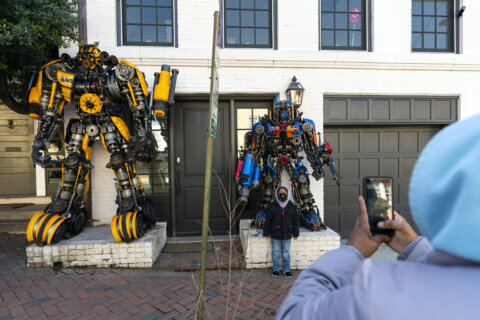It’s hard for me to believe that on Friday, I had the upper lobe of my cancerous left lung removed, went home the next day, and am back to work, Tuesday. It shows what medical device and biopharmaceutical innovation can do for stage 4 cancer patients, in the hands of a wonderful treatment team.
On Friday, I had a robot-assisted lobectomy, with lymph nodes removed from the center of my chest. Three days later, I barely need over-the-counter pain medication.
Great to be out for a walk in nature, a few days after robot-assisted lobectomy for #lungcancer. One pill a day targeted therapy killed cancerous tumors and nodes in both lungs. Removing lobe where cancer originated, continuing pill helps it not come back. ❤️to all. pic.twitter.com/YufISuYLMA
— Neal Augenstein (@AugensteinWTOP) April 17, 2023
In years past, I wouldn’t even be considered a candidate for surgery. In 2023, I’m home, feeling great, with no limits on my activities, and exercising to help my lungs regain their capacity.
In November, when I was diagnosed with EGFR-mutated lung cancer, I had adenocarcinoma in my left lung. With follow-up tests in the hospital, I learned it had spread to include lesions and lymph nodes in both lungs, and a cancerous lymph node in the center of my chest.
When it spreads like that, it’s called stage 4, or metastatic cancer. When that’s the case, my treatment team at Inova Schar Cancer Institute explained, surgery isn’t considered an option, because it wouldn’t make sense to remove a tumor if active cancer is present in another organ.
However, things changed dramatically with the one-pill-a-day targeted therapy I’ve taken since December, which killed the cancerous lesions and lymph nodes in both lungs.
After a biopsy showed I had lung cancer, I went through what’s called biomarker testing to help focus on my DNA and the changes that led to uncontrolled cell growth, which is what cancer is.
The biomarker testing showed I have EGFR exon 19 deletion. For that particular mutation, there’s a drug called osimertinib, with a brand name of Tagrisso, which “turns off” the signals that tell my cancer cells to grow and divide.
Since the targeted treatment worked so well, after consultation, my team thought I’d be a good candidate for surgery, since removing the lobe where the cancer originated, and continuing with osimertinib, can help reduce the chances of cancer recurring.
What surgery was like
Beats me — I slept through it, and don’t remember when I was waking up. The first thing I remember is walking, which is a key part to recovery.
My surgeon’s plan was to perform the lobectomy with the help of the da Vinci robot, which is a less-invasive procedure than a standard procedure in which a long incision is needed to access the lung by spreading the ribs.
During the procedure, the doctor sits in a console, operating the robot. Four tiny robot arms — a left hand, a right hand, a retraction device, and a camera, go through tiny incisions on my side and back.
While the surgery was expected to take two hours, it took almost an hour longer, my wife would tell me later. The surgeon told her he had to carefully maneuver through all the now-dead remnants of cancer that had been killed by the targeted therapy.
In the recovery room, while waiting for a bed to become available, my nurse was having me take frequent walks down the hall, to help wake up my body and get my breathing back toward normal. I devoured ginger ale and saltines and got a visit from my wife.
As is often the case after general anesthesia, I don’t remember when or where I spoke to my surgeon, but I remember him saying, “We got it.”
And, I realized I had a chest tube inserted — creating a fifth incision — which was attached to a drainage device.
I wouldn’t call it “a good night’s sleep” in the hospital, since after lung surgery, with the chest tube still inserted, I could either prop my hospital bed up to at least 45%, or sleep in a reclining chair — I chose the bed, and got about three hours sleep.
All the nurses, doctors, and techs who visited that night said I’d feel less discomfort when the chest tube was removed.
Early Saturday morning, my surgeon appeared. With a clearer head than I had in the recovery room, I asked him some questions about the surgery.
And then he asked me to cough a couple times. By looking at the drainage device, he was able to tell that there were no leaks in my lung.
“We’ll take out that tube, and you’re going home,” he told me.
Amazing, right? By noon Saturday, I was on my way home.
We’re still waiting for the biopsy results of the now-removed lobe, to see what was still in there. My five incisions are healing beautifully, and I’ll have a follow-up appointment with my surgeon and oncologist next week.
In the meantime, my assignment is to take plenty of walks, and breathe into a plastic incentive spirometer, which helps expand my lung capacity.
I’ve said it before — nobody wants to get lung cancer, but it happens to lots of us. But, with the recent developments and ongoing trials and research in medicine, technology and treatment strategies, it’s really redefining what’s possible for people with stage 4 lung cancer.







